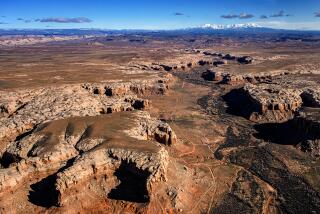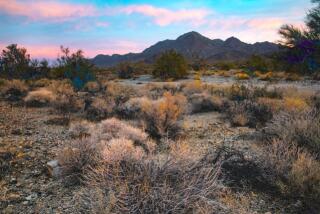Former JY Ranch in Grand Teton National Park is a hidden gem
- Share via
It’s not every day I get to see something new in an 80-year-old national park.
In the last century, John D. Rockefeller Jr. bought up about 36,000 acres in Jackson Hole and, in 1949, donated most of it to Grand Teton National Park. But he kept the 3,000-acre JY Ranch, formerly Jackson Hole’s oldest dude ranch, as a family retreat.
In the 1990s John’s son, Laurance Rockefeller, transferred 2,000 acres of the JY to the park. In 2001 he said he wanted to turn over the final acreage, but, as sometimes happens when lawyers and bureaucrats put their heads together, the gift of the last 1,106 acres took seven years to complete.
The delay stemmed partly from Laurance Rockefeller’s insistence that the area be returned to its natural state. That meant 30 buildings needed to be relocated and several miles of paved road eliminated.
With relatively little fanfare the preserve opened in November 2007 off the Moose-Wilson Road, perhaps a mile south of the new Craig Thomas Discovery & Visitor Center and midway between the Death Canyon and Granite Canyon trail heads. The preserve has ample parking and a couple of ultra-green buildings, including world-class restrooms.
Among other energy-saving features, the preserve’s 7,500-square-foot visitor center, which opened in June, features solar power, geothermal heating from 250-foot wells and automated lighting sensitive to occupancy and daylight levels.
The parking lot was nearly empty and there were a few visitors in the center when we arrived about 9 in the morning the Sunday before Labor Day. The rangers and volunteer staff were accommodating, clearly proud of their new piece of the park. The volunteer staff at the front desk kept track of visitor counts and mentioned that only 100 to 300 people passed through the visitor center on any given day.
Considering that the preserve had been open for months and that Grand Teton received more than 2 1/2 million visitors in 2007, these numbers seemed tantalizingly low. Winter is even quieter; for an idea of winter activities, see www.grand.teton.national-park.com/winter.htm.
Perhaps part of the explanation lay in the park’s low-key approach to the preserve. Neither the National Park Service Grand Teton NP brochure nor the summer edition of Teewinot, the park’s newspaper -- both given to visitors -- make any but the most cursory reference. The brochure shows the preserve on its map without any information. Teewinot lists it among its ranger-led programs but doesn’t show it on the map.
But perhaps I protest too much.
The preserve’s biggest attraction is its system of trails to and around scenic Phelps Lake. If you’re in a hurry you can walk the easy 2.9-mile loop from the center to the lake using the Lake Creek and Woodland trails. The longest hike is the 7-mile Phelps Lake Loop Trail. On a ranger’s advice we took the more strenuous 5.8-mile loop to the lake along the Aspen Ridge and Boulder Ridge trails, which, as the names implied, involved a little moderate climbing.
The trail was beautiful. The weather was perfect. Nobody was there.
We quickly rose above the sagebrush meadow around the center and entered the high forest, home to spruce, fir, lodgepole pine and aspen. Shaded by trees, the trail is comfortable even on warm days, with lots of opportunities to observe open meadows, mountains and Jackson Hole through clearings. Other than a few folks at Phelps Lake and a couple of rangers, we didn’t see a soul along either the Aspen Ridge or Boulder Ridge Trail. That suited us. With few exceptions, the park’s trails aren’t crowded, but having a whole trail to yourself is something to savor.
Grand Teton is home to charismatic mega-fauna -- moose, bear, elk and deer, among others -- and the area around Phelps Lake is as richly populated as any other.
The views of the Teton peaks over tree-lined slopes alone are worth the hike.
And, for now at least, you can have it to yourself.
For info: www.nps.gov/parkoftheweek/grte.htm
travel@latimes.com
More to Read
Sign up for The Wild
We’ll help you find the best places to hike, bike and run, as well as the perfect silent spots for meditation and yoga.
You may occasionally receive promotional content from the Los Angeles Times.






